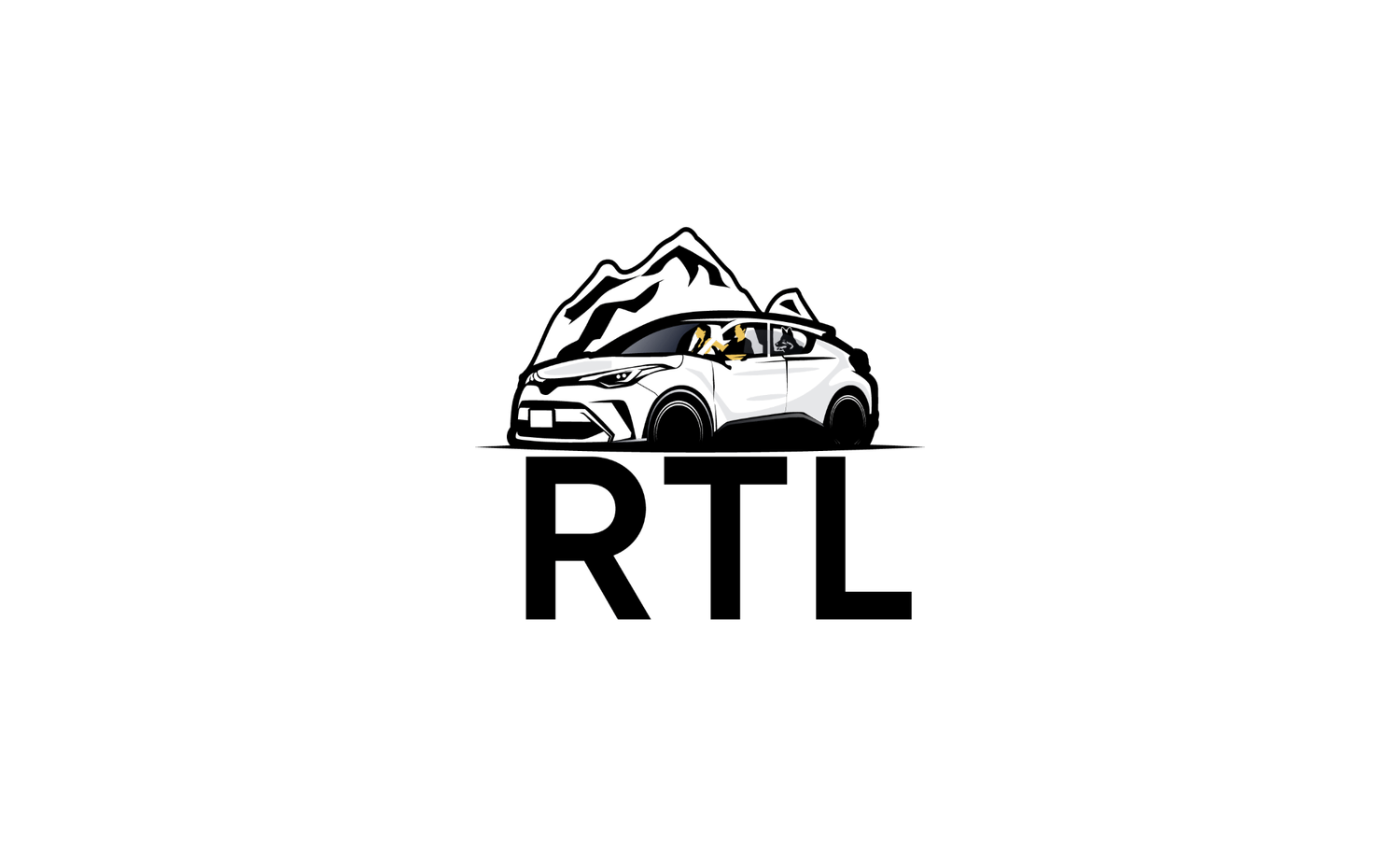Where to See Bears in Yellowstone Nat'l Park
There’s nothing quite like the thrill of spotting a grizzly or black bear in the wild, and Yellowstone National Park is one of the best places on Earth to do just that! From a lone grizzly digging for roots in a high alpine meadow to a black bear cub clumsily trailing behind its mother, every bear sighting feels like a once-in-a-lifetime experience.
But while bears are iconic Yellowstone residents, they aren’t always easy to find. Timing, location, and a little bit of luck all play a role in whether you get a front-row seat to bear country—or just a scenic drive through the park. That’s why we’re breaking down when, where, and how to spot bears in Yellowstone, plus expert tips to keep you safe while watching these powerful animals!
Table of Contents Hide
Best Time of Year to See Bears in Yellowstone
Spring (April to June)—Best for Bear Cubs and Active Bears
Spring is the best time to see bears in Yellowstone as they emerge from hibernation hungry, active, and possibly… with cubs! Grizzlies tend to come out first in March or April, followed by black bears in April or May.
The best month to plan a spring trip to Yellowstone for bears is mid-May to early June, when you have the best chance of spotting bear cubs, black bears, cinnamon black bears, and grizzly bears on one trip.
Best locations: Tower Junction, Lamar Valley, Hayden Valley
Best time: Early morning or early afternoon
What to look for: Grizzlies digging for roots or scavenging winter-killed animals, cubs napping or playing in trees
Summer (July & August)—Good but Less Frequent Sightings
Bears are more elusive in summer, moving to higher elevations where it's cooler and food is abundant.
Best locations: Dunraven Pass, Beartooth Highway, Mount Washburn, Roadside Meadows
Best time: Dawn or dusk
What to look for: Black bears feeding on berries in wooded areas, Grizzlies digging for roots along roadways
Fall (September to October)—Best for Hyperphagia (Feeding Frenzy)
As bears prepare for hibernation, they enter hyperphagia, consuming up to 20,000 calories per day.
Best locations: Fishing Bridge, Yellowstone Lake, Tower Junction
Best time: Afternoon, when bears forage for food
What to look for: Grizzlies fishing for cutthroat trout
Winter (November to March)—Least Likely to See Bears
Most bears hibernate during winter, making sightings extremely rare. However, some grizzlies delay hibernation if food sources remain available.
Where to See Bears in Yellowstone
1. Lamar Valley (Best for Grizzlies)
Lamar Valley is the best place to see grizzlies roaming open fields.
Best time: Early morning or dusk
Best pullouts: Hitching Post, Slough Creek, Soda Butte
2. Tower-Roosevelt Area (Black Bear Hotspot)
One of the best places to see black bears, especially in the trees near Tower Falls.
Best time: Afternoon
Best pullouts: Tower Falls, Petrified Tree
3. Hayden Valley (Great for Both Grizzlies and Black Bears)
Wide open spaces make it easy to spot bears from the road.
Best time: Dawn and dusk
Best pullouts: Alum Creek, Grizzly Overlook
4. Dunraven Pass (Higher Elevation Bear Habitat)
A prime summer location where bears move to avoid heat.
Best time: Morning
Best pullouts: Mount Washburn trailhead
5. Yellowstone Lake & Fishing Bridge (Bears Fishing for Trout)
Grizzlies sometimes hunt cutthroat trout in shallow waters.
Also drive from Fishing Bridge toward Yellowstone’s East Entrance. Look in meadows off the road.
Best time: Fall mornings
Best pullouts: Fishing Bridge, Lake Butte Overlook
Bears in Yellowstone Map
Here’s a map of Yellowstone National Park highlighting bear sighting hotspots in Lamar Valley, Hayden Valley, and the Northern Range. Use pullouts, bring a scope, and arrive early for the best chances of spotting black bears and grizzly bears!
Best Times of Day to See Bears
Early Morning (Best Time) – Bears are most active just after sunrise.
Dusk (Second Best Time) – As temperatures drop, bears emerge from the trees.
Midday (Least Likely) – Bears often seek shade and rest during the day.
Tips for Spotting Bears in Yellowstone
Bring Binoculars or a Spotting Scope—Bears are often far from the road.
Arrive Before Sunrise—Head into the park early for the best wildlife-watching opportunities.
Look for Movement in Meadows and Tree Lines—Bears are excellent at blending in.
Check with Park Rangers—They often know about recent bear activity.
Be Patient—Sometimes, you have to wait for a bear to appear.
Follow the Crowds—If you see cars pulled over, they may have spotted a bear.
Stay in Your Car—Bears often wander close to roads; staying inside your car keeps you safe and prevents disturbances.
Use Pullouts for Viewing—Never stop in the middle of the road; instead, use designated pullouts to safely observe bears.
Avoid Strong Scents—Bears have an incredible sense of smell. Avoid using strong-smelling lotions, perfumes, or scented food wrappers when in bear country.
Listen for Bird Activity—Ravens and magpies often gather around carcasses, which may mean a bear is nearby.
What to Pack for Bear Watching
Spotting Scope or Binoculars—Essential for distant sightings.
Camera with Telephoto Lens – A 400mm or 500mm lens works best.
Layers of Clothing—Yellowstone’s early mornings and evenings can be freezing, even in summer. Wear base layers, an insulated jacket, gloves, and a hat to stay warm.
Food & Water – You may be out for hours waiting for a sighting.
Map & Notebook – Keep track of locations and observations.
Red Light Flashlight—If heading out before sunrise, use a red light flashlight to avoid disturbing wildlife while keeping your vision adjusted to the dark.
Camera with a Long Lens—A 400mm or 500mm telephoto lens is ideal for capturing distant wolves.
Sunscreen & Sunglasses—Even in winter, Yellowstone’s high elevation means strong sunlight reflecting off the snow.
Best Spotting Scopes & Where to Rent or Buy
Top Spotting Scopes for Bear Watching
Vortex Viper HD 20-60x85 – Good mid-range scope
Swarovski ATX 25-60x85 – High-end scope with exceptional clarity
Where to Rent a Spotting Scope in Gardiner, MT
Optics Yellowstone LLC—Offers high-quality scope rentals.
Big Sky E-Bike Tours—Offers scope and binocular rentals.
Best Long Lenses for Bear Photography
Canon RF 100-500mm f/4.5-7.1L (great zoom range)
Nikon 500mm f/5.6 PF (sharp, lightweight option)
Sony 200-600mm f/5.6-6.3 G OSS (excellent reach for Sony users)
Where to Stay for the Best Bear-Watching Experience
Gardiner, MT, located at Yellowstone’s North Entrance, is one of the best bases for bear-watching no matter the time of year you visit.
Gardiner offers easy access to Lamar Valley and Tower Junction, prime bear habitat areas. With local guides, spotting scope rentals, and cozy lodging, Gardiner is the ultimate home base for an unforgettable wildlife adventure in Yellowstone National Park!
Wildlife Watching Tours in Gardiner, MT
If you want expert guidance and someone else to worry about the driving & parking while you keep your eyes peeled for bears and other wildlife, a guided tour is a great option. Guided wildlife-watching tours often include spotting scopes, experienced guides, and in-depth knowledge of recent wildlife behavior.
Here are some wildlife tours based out of Gardiner, MT.
Yellowstone Safari Company—Offers wolf, bear, and wildlife safaris from Gardiner, MT, and Bozeman.
Yellowstone Wolf Tracker—Specializes in wolf-focused tours with expert guides.
Yellowstone Forever Wolf Tours—A good option for those looking to support conservation efforts.
Bear Safety & Viewing Guidelines
Stay at least 100 yards away, and never feed bears. Park regulations require this distance, and feeding wildlife is prohibited and dangerous.
Carry bear spray and know how to use it. (Bear spray is not allowed on planes, so plan to rent or buy bear spray once you arrive in Yellowstone. You can do so at most park gift shops.)
Hike in groups of 4 or more when possible. (Meet up with other hikers at trailheads.) Traveling in numbers makes it easier to make noise and increases your visibility on trails, which helps warn wildlife of your approach.
Talk or sing while hiking. (It’s generally more helpful to talk or sing than it is to play music.) Talking or singing as you hike can alert bears to your presence, helping prevent surprise encounters.
Say, “Hey Bear!” when rounding blind corners to avoid surprising wildlife. Rounding a bend on a trail or cresting a hill can put you close to a bear without warning. Saying, “Hey Bear!” or making other noise before turning corners or entering dense vegetation gives nearby animals the chance to move away. It’s a simple habit that allows both you and the wildlife to avoid accidental close encounters.
Store food properly—use bear-proof containers or park-provided food storage lockers. Bears have a powerful sense of smell and are highly attracted to food, scented toiletries, and even gum or sunscreen. Minimize the scents you carry by leaving non-essentials behind and packing food in odor-proof containers if possible.
If you encounter a bear, back away slowly. Don’t Run. In a bear encounter, staying calm is key—slowly back away without turning your back, maintaining a steady pace. Running can trigger a bear’s instinct to chase, making the situation more dangerous. By moving away gradually, you demonstrate non-threatening behavior, which can help the bear feel less alarmed.
Check trail signs for sightings before beginning a hike. (And follow trail closure signs, especially in bear management areas.)
FAQs About Bears in Yellowstone
Q: How many bears are in Yellowstone?
About 700-750 grizzly bears and 500-600 black bears.
Q: What’s the best time of year to see bears?
Mid-May through early June is one of the best times of the year to see black and grizzly bears in Yellowstone.
Q: Can I see bears from my car?
Yes! Many bears are seen right from the road in Lamar Valley, Hayden Valley, and Tower-Roosevelt.
Q: What do I do if I encounter a bear while hiking?
Stay calm, don’t run, talk calmly, and slowly back away while keeping your eyes on the bear.
Seeing a bear in Yellowstone is a thrilling experience. Whether you explore on your own or join a guided tour, knowing where and when to look is key. Stay safe, bring good optics, and enjoy watching these incredible animals in their natural habitat!
Plan Your Trip to Yellowstone with our All-Seasons Travel Guide
Plan the ultimate Yellowstone vacation with our All-Seasons Yellowstone Travel Guide! With detailed maps, insider tips, and custom itineraries you won't find anywhere else, our Yellowstone Travel Guide will help you experience the best—and less-traveled—parts of Yellowstone National Park. Take the stress out of planning a vacation to one of America's largest and most diverse national parks and make the most of your time with our comprehensive, easy-to-use travel guide.
Save this for later
Hover over the image below and click on the red “Save” button that pops up in the upper lefthand corner of the image to save this on Pinterest for later. (If you’re on mobile, you might have to tap the image first to see the red ‘Save’ button.)
Happy Travels!
Related Posts

















